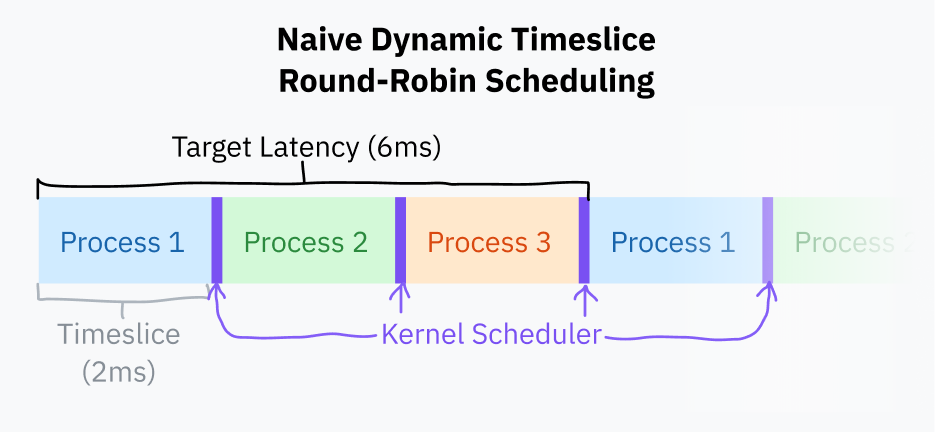I believe it is correct, but phrased somewhat ambiguously.
I updated this section to the following:
A slight improvement to fixed timeslice scheduling is to pick a target latency — the ideal longest time for a process to respond. The target latency is the time it takes for a process to resume execution after being preempted, assuming a reasonable number of processes. This is pretty hard to visualize! Don't worry, a diagram is coming soon.
Timeslices are calculated by dividing the target latency by the total number of tasks; this is better than fixed timeslice scheduling because it eliminates wasteful task switching with fewer processes. With a target latency of 15 ms and 10 processes, each process would get 15/10 or 1.5 ms to run. With only 3 processes, each process gets a longer 5 ms timeslice while still hitting the target latency.
Process switching is computationally expensive because it requires saving the entire state of the current program and restoring a different one. Past a certain point, too small a timeslice can result in performance problems with processes switching too rapidly. It's common to give the timeslice duration a lower bound (minimum granularity). This does mean that the target latency is exceeded when there are enough processes for the minimum granularity to take effect.
At the time of writing this article, Linux's scheduler uses a target latency of 6 ms and a minimum granularity of 0.75 ms.

Is this easier to understand, or is there still a technical problem?
The chapter on multitasking says -
"The target latency should be equal to the time it takes for a process to resume execution after being preempted."
Is this correct? AFAIK the target latency only needs to be atleast as long as the time it takes for a process to resume execution after being preempted.